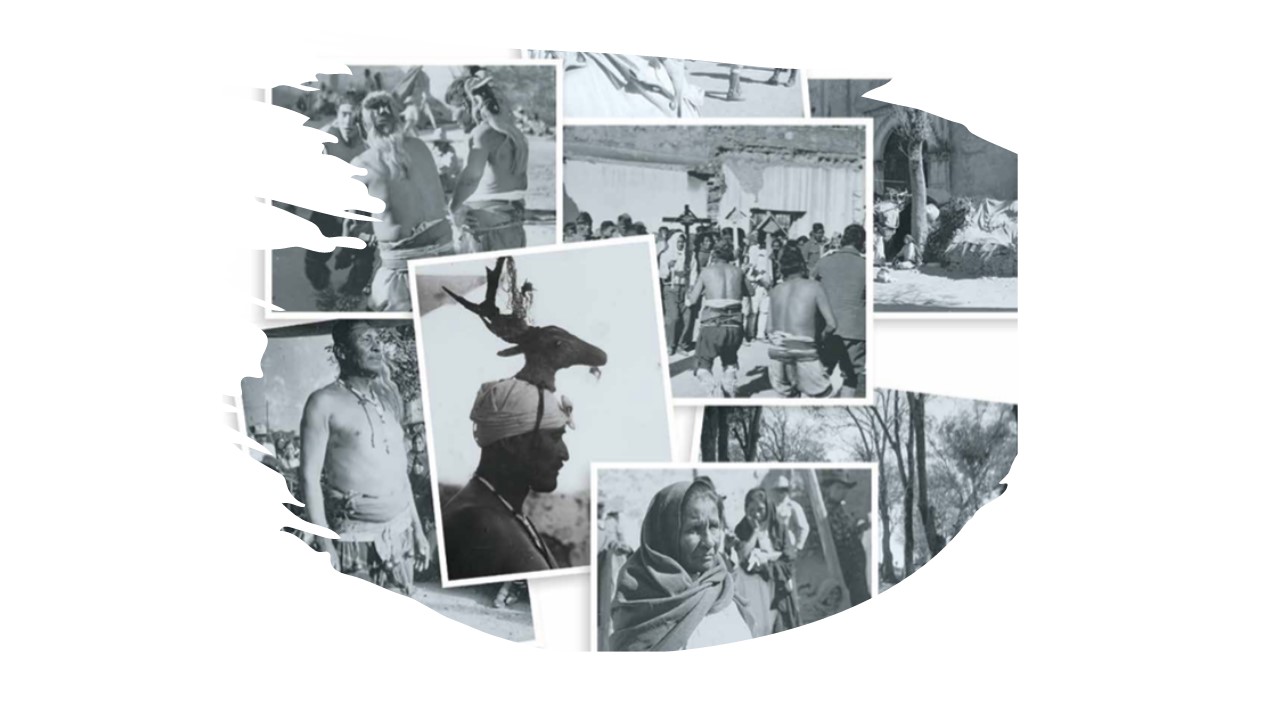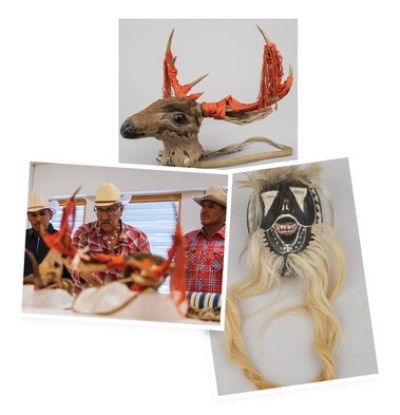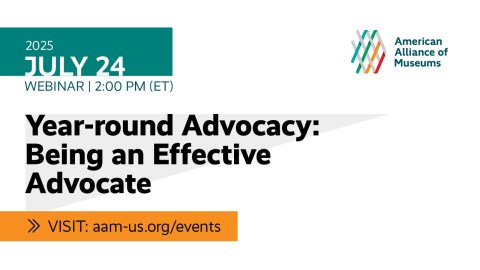
This article originally appeared in Museum magazine’s November/December 2023 issue, a benefit of AAM membership.
In 2022, the National Museums of World Culture in Sweden returned ceremonial items to the Indigenous Yaquis in Mexico.
In a ceremony held on June 3, 2022, Sweden, facilitated by the National Museums of World Culture, returned a collection of 24 ceremonial artifacts to the Indigenous Yaqui people from the Mexican state of Sonora. This marked the culmination of a challenging cross-continent journey spanning almost two decades and involving the collaborative efforts of several stakeholders, including the Yaqui people in Mexico, the Pascua Yaqui Tribe in Arizona, and the Swedish museum. The unfolding saga of negotiations and revelations encompassed both emotionally impactful and enlightening moments.
Having been the Latin American Curator for Collections and Research at the National Museums of World Culture—referred to as Statens museer för Världskultur/världskulturmuseerna (SMVK) in Swedish—I was deeply immersed in this historic restitution process and had an intimate connection with this remarkable narrative. SMVK was created in 1996 to administer the country’s collections from outside Europe and includes the Museum of Ethnography, the Mediterranean Museum, the Museum of East Asia in Stockholm, and the Museum of World Culture in Göteborg.
But what is the correct way to tell this story of restitution? From which point of view should it be told? It is probably most correct to start with the creation of the museums that kept the spoliation from colonial and neocolonial times as their so-called ethnographic collections. But that would make this recounting much too long. However, it is also important to remember the history of the countries where such collections originated, which is of particular importance in this case.
I am going to try to keep myself to the facts of this restitution.
From Mexico to Sweden
European museums are currently grappling with the complexities of requests for restitution and repatriation, often from groups and individuals who were historically silenced and marginalized. Protocols and guidelines, based on international standards largely shaped by economically and politically powerful nations, often disadvantage Indigenous communities.
This case began with a single sacred object—the Maaso Kova—a revered deer head integral to the Yaqui people’s ceremonial dances that acts as a bridge between the physical world and the spiritual realm of their ancestors.
The collection at SMVK had its roots with the Yaqui people, who were forcibly relocated by the Mexican government in the early 20th century from their original land in Sonora to Tlaxcala, around 1,200 miles to the south. During their confinement in Tlaxcala, the Yaquis persevered in honoring their traditions, beliefs, and cultural heritage, even integrating symbols from their unfamiliar surroundings into new ceremonial objects. For example, the collection includes a Maaso Kova not made from a deer and the use of a flower that was not present in their culture before the deportation but is still popular with Yaquis today. These artifacts form the cornerstone of SMVK’s collection.
The artifacts found their way to Sweden through an unexpected connection, forged by the friendship between the deported Yaquis and two Danish women, Helga Larsen and Bodil Christensen. Today, we can acknowledge that there were inherently imbalanced power dynamics within this relationship between two white, European women and a group of dispossessed Indigenous people; however, the extensive correspondence between the sisters and the Yaquis suggests a genuinely friendly alliance. The Yaquis gifted the sisters many of the objects and sold them others.

The collection arrived in Sweden during the mid-1930s and was housed at the Museum of Ethnography in Stockholm, a part of SMVK, until the early 21st century. In 2004, the Maaso Kova from the collection was exhibited as part of “den skapande männiksa” (“The Creative Man”). After viewing the exhibition, Andrea Carmen, a representative of the International Indian Treaty Council (IITC), first requested the return of the sacred Maaso Kova. IITC is an organization of Indigenous peoples from the Americas, the Caribbean, and the Pacific that works to protect Indigenous rights, treaties, traditional cultures, and sacred lands. However, this request was not documented in the SMVK archives until 2014, when the Pascua Yaqui Tribe in Arizona, collaborating with the IITC, also demanded its return.
Following research into the Yaqui items in the collection, the Museum of Ethnography concluded that there was no basis to return the mask to the Yaqui in Arizona. Among the key reasons cited by the museum were that the collection was a gift from the exiled Yaquis in Tlaxcala and that the objects hailed from Mexico, not the United States.
The Restitution Process
The Yaquis’ pursuit of restitution did not end when the museum initially declined to return the Maaso Kova to Arizona. The IITC, in partnership with the Pascua Tribe in Arizona, persisted in their claim for the Maaso Kova. In 2015, SMVK chose to involve Mexico and the Yaquis from Rio Yaqui in Sonora, Mexico, in the case. Mexico’s National Institute of Anthropology and History (INAH), acting as the intermediary between SMVK and the Yaqui people, appointed Dr. Raquel Padilla Ramos as its interlocutor. Dr. Padilla Ramos, an expert in Yaqui history and a Yaqui rights activist, was embraced by the Yaquis of the Ocho Pueblos, which is the group’s governing body.
In 2017, a delegation of Yaquis from Sonora, Mexico, traveled to Sweden to study the objects. They concluded that it would be sacrilegious to separate the Maaso Kova from the other objects in the Yaquis’ collection. The entire collection, rather than just the Maaso Kova, should be restored to the Yaqui people. Subsequently, SMVK began to contemplate the possibility of returning the entire collection to the Rio Yaqui in Mexico.
Though the initial request for repatriation originated from the descendant community in the United States, the source community for the objects was in Mexico. While the Yaquis from Pascua in Arizona believed that their Yaqui identity took precedence over their current country of residence, SMVK, like most Western museums, focuses on tracing the provenance of objects, making origin important.
Adding further complexity, the Ocho Pueblos in Sonora, Mexico, hold the authority to decide Yaqui cultural matters, and the Pascua tribe is not one of the Ocho Pueblos. During this process, one of the Pueblos, Loma de Bacum, communicated to SMVK that its members wished for the objects to remain in Sweden. Their rationale was that their ancestors had offered these items as a gift, and they wished to honor that legacy. However, this argument was not accepted by the IITC or the Yaquis from Pascua.
The two Yaqui groups also had different institutional allies. The Pascua tribe in Arizona sought assistance from the United Nations and Mexico’s National Institute of Indigenous Peoples (INPI). The leaders of Ocho Pueblos in Sonora collaborated with INAH. Some Yaqui activists in Sonora, still striving for basic rights in their homeland, were wary of the INPI.
Upon the artifacts’ return on June 3, 2022, at the Mexican Embassy in Stockholm, only those affiliated with the Arizona/INPI group were present to receive the objects. The Yaquis from Sonora, who had been involved in studying the collection, were notably absent from the ceremony, highlighting possible ongoing disagreements between the two groups.
Ultimately, on July 14, 2023, in a ceremony in Vicam, a town in Sonora, Mexico, the boxes from Sweden were unveiled in front of the leaders of the Ocho Pueblos. After inspecting the items, the objects were resealed in the boxes, awaiting the Yaquis’ decision regarding their future home and purpose.
Once the collection was repatriated, SMVK’s involvement in the process ceased. Nonetheless, lingering questions remain. Could the process have been improved? Should the rules of engagement have been revised? Did the Danish sisters ultimately exploit the vulnerable political circumstances of the Yaqui? Are the source or descendant communities the rightful owners?
While definitive answers are elusive, restitution offers a glimmer of hope—a chance for the Yaqui communities to recontextualize their past through the prism of these artifacts. Restitution also offers a process for museums to reconsider their practices, fostering a more just and inclusive future.
Resources
The Yaqui Case: Repatriation from Multiple Perspectives
varldskulturmuseerna.se/en/collections/return-of-objects-from-the-collections/the-yaqui-case/
Instituto Nacional de los Pueblos Indígenas (INPI) press release on the repatrition (in Spanish)
bit.ly/3sv1Dwr
Instituto Nacional de Antropología e Historia (INAH) article on the repatriation (in Spanish)
bit.ly/45qD9TN







